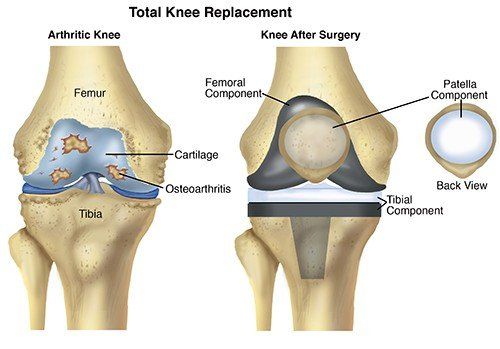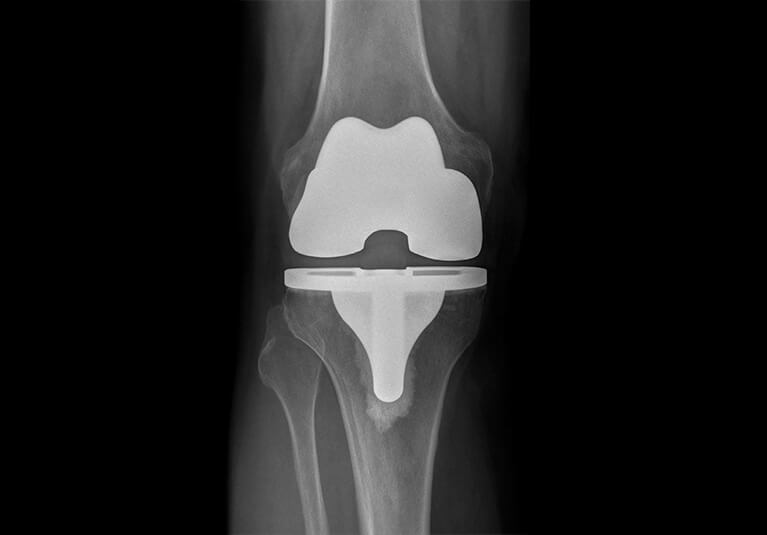The exhilarating thud of a tennis ball connecting with the racquet, the satisfying pop of a well-executed serve, the swift agility as you rush to the net for a volley—tennis is a sport that brings joy and vitality to countless enthusiasts around the world. However, for those who have undergone a knee replacement, the path back to the tennis court may seem fraught with uncertainty and questions. Can you ever play tennis again after knee replacement surgery? Is it safe? What precautions should you take, and how can you regain your former level of performance? In our article, we embark on an exploratory journey guided by experts in the field, dedicated to providing you with the answers and guidance you need to confidently step back onto the court after knee replacement surgery.

Knee replacement surgery is a life-changing procedure that can alleviate chronic pain and improve the quality of life for millions of people. Whether you’ve recently undergone knee replacement surgery or are contemplating the procedure, one of the burning questions on your mind may be whether you’ll ever be able to enjoy your beloved tennis matches again. The good news is that, with the right knowledge, preparation, and guidance, it’s entirely possible to return to the tennis court and embrace your passion once more.
In this comprehensive article, we will draw on the insights of leading experts in orthopedic surgery, physical therapy, and sports medicine to address the unique challenges and considerations associated with resuming tennis after a knee replacement. We will explore the common fears and misconceptions surrounding this endeavor and provide you with valuable information and practical tips that will help you confidently step back into your tennis shoes. Our experts will share their knowledge on post-operative care, rehabilitation strategies, the importance of proper technique, and how to gradually rebuild your strength and agility on the tennis court. Moreover, we will delve into the stories of individuals who have successfully navigated this journey, offering inspiration and real-world experiences to guide you.
Returning to tennis after knee replacement surgery may be a challenge, but it’s a challenge that can be surmounted with the right guidance and determination. So, whether you’re a seasoned tennis player or a budding enthusiast, join us in exploring the expert insights, stories of triumph, and practical advice that will help you serve, volley, and smash your way back to the court after knee replacement surgery. Your love for tennis doesn’t have to end; it can, in fact, mark a new beginning in your journey to a healthier and more active life.
Understanding Knee Replacement Surgery
Before delving into the specifics of returning to tennis, it’s crucial to grasp the fundamentals of knee replacement surgery. Orthopedic surgeons perform knee replacements to relieve chronic pain and improve mobility in individuals with debilitating knee conditions. This procedure involves replacing the damaged or worn-out knee joint with a prosthetic implant, effectively creating a new, functional joint.
While knee replacement surgery can work wonders in restoring your quality of life, it’s not without its challenges. Typically, recovery and rehabilitation can take several months, and during this time, you’ll need to focus on strengthening your knee and restoring its range of motion. It’s important to work closely with your medical team during this phase, adhering to their prescribed exercises and treatment plans.
The Concerns and Misconceptions
Many tennis enthusiasts who undergo knee replacement surgery are plagued by fears and misconceptions about their ability to return to the sport. The most common concerns include worries about damaging the prosthetic joint, experiencing pain, or facing limitations in movement. While these concerns are valid, it’s essential to understand that a well-planned and supervised approach to resuming tennis can significantly mitigate these risks.
In the following sections, we’ll address each of these concerns and provide expert advice on how to overcome them:
- Protecting the Prosthesis: To protect your prosthetic joint, you should be mindful of your movements, especially on the court. Engaging in regular exercise, maintaining a healthy weight, and listening to your body are all vital components of ensuring your prosthetic joint’s longevity.
- Managing Pain: Post-surgery pain is a common fear. However, with the appropriate pain management strategies and by respecting your body’s limits, you can minimize discomfort and improve your overall tennis experience.
- Addressing Mobility Concerns: Maintaining and improving your range of motion is paramount after knee replacement. We will explore physical therapy exercises and stretching routines that can help you regain flexibility, making those swift court movements more accessible.
Preparing for a Tennis Comeback
Preparation is key to a successful return to the tennis court. As you embark on this journey, consider the following essential steps:
- Consult with Your Medical Team: Regular check-ups with your orthopedic surgeon and physical therapist are essential. They will help you monitor your progress and ensure you’re on the right track for a safe return to tennis.
- Gradual Progression: Tennis can be physically demanding, so it’s crucial to ease back into the sport. Start with light, controlled movements and gradually increase your intensity as your body allows.
- Technique Matters: Tennis is as much about skill as it is about physicality. Brushing up on your tennis technique, such as your serve and footwork, can help you minimize the stress on your knee and optimize your performance.
Real-Life Stories of Triumph
Hearing from individuals who have successfully returned to tennis after knee replacement surgery can be incredibly inspiring. We will feature stories of players who overcame the odds and regained their love for the game. Their experiences, challenges, and victories will serve as a beacon of hope and motivation for those looking to follow in their footsteps.
Moving Forward with Confidence
In conclusion, returning to tennis after knee replacement surgery is a journey that requires determination, patience, and expert guidance. With the right knowledge, support, and a positive mindset, it is entirely possible to serve, volley, and smash your way back to the court. Remember, your love for tennis can be a source of motivation, driving you towards a healthier, more active, and fulfilling life post-surgery.
As we navigate this comprehensive guide, we hope to equip you with the tools and insights needed to make your tennis comeback a reality. Your racquet, the court, and the camaraderie of fellow players await your return. So, let’s embark on this journey together and serve your way back to the game you love!
Rehabilitation and Conditioning
Rehabilitation plays a pivotal role in your journey back to the tennis court. Your rehabilitation program should be tailored to your specific needs and guided by a physical therapist who understands the demands of tennis. Key components of your rehabilitation plan may include:
- Strengthening Exercises: Targeted exercises to build strength in your quadriceps, hamstrings, and calf muscles are essential. A strong, balanced lower body can provide added stability to your knee.
- Range of Motion Training: Working on increasing your knee’s range of motion is crucial. Your therapist will guide you through exercises to improve flexibility and mobility.
- Balance and Proprioception: Tennis requires agility and balance. Specific exercises to enhance your balance and proprioception can help you move more confidently on the court.
- Endurance Training: Tennis matches can be physically demanding. Cardiovascular conditioning is essential, and your therapist can help you gradually build your endurance.
Safety on the Court
While preparing for your tennis comeback, safety should remain a top priority. Here are some essential tips to ensure your safety on the court:
- Appropriate Footwear: Choose tennis shoes that provide excellent support and cushioning for your knees. Orthopedic insoles may also be beneficial.
- Warm-Up and Cool Down: A proper warm-up and cool-down routine is crucial to prevent injuries. Incorporate dynamic stretching and light cardio into your pre-match routine.
- Pacing Yourself: Listen to your body. If you experience pain or discomfort, take a break. Pushing through discomfort may lead to injury.
- Court Surface: Consider playing on softer court surfaces like clay or artificial grass, which can be more forgiving on your joints than hard courts.
Overcoming Mental Hurdles
Returning to tennis after knee replacement surgery is not only a physical journey but a mental one as well. You may experience doubts and anxiety about your performance. It’s essential to maintain a positive and patient mindset. Here are some tips for overcoming mental hurdles:
- Set Realistic Goals: Define achievable milestones and celebrate your progress. Setting small, measurable goals can help you stay motivated.
- Visualization: Use mental imagery to visualize yourself playing tennis with confidence and ease. This technique can boost your self-assurance.
- Stay Connected: Join a tennis group or find a supportive tennis community. Surrounding yourself with like-minded individuals can be both motivating and reassuring.
Monitoring and Adjusting Your Regimen
As you continue your journey back to tennis, remember that monitoring your progress is essential. Regularly consult with your medical team and physical therapist to make any necessary adjustments to your rehabilitation and training program. They can provide guidance and ensure that you are staying on the right track for a safe and successful return to tennis.
Embracing Your Tennis Comeback
With dedication, perseverance, and the right support system, you can triumph over the challenges and uncertainties that come with returning to tennis after knee replacement surgery. Your love for the game can serve as your motivation, driving you towards a healthier, more active, and fulfilling life post-surgery.
In closing, as you pick up your racquet and step onto the court once again, savor the sensation of your first serve, the speed of your returns, and the camaraderie of fellow players. Your tennis comeback is not just a return to the game; it’s a celebration of your resilience and an affirmation that life’s passions can endure even in the face of physical challenges.
So, serve, volley, and smash your way back to the tennis court. Your journey to embracing your beloved sport once more is a testament to the human spirit’s remarkable capacity for recovery and determination.
Supportive Resources
In your journey to return to tennis after knee replacement surgery, you don’t have to go it alone. Various resources are available to provide support and encouragement. These resources can include:
- Support Groups: Joining a support group of individuals who have undergone knee replacement surgery can offer a sense of community and a platform to share experiences and advice.
- Online Forums and Communities: The internet is a treasure trove of information. Online forums and communities dedicated to knee replacement recovery and returning to sports can be valuable sources of guidance.
- Professional Coaching: Consider working with a tennis coach who has experience with players recovering from injuries. They can tailor your training to your unique needs and goals.
- Educational Materials: Books, videos, and articles like this one can be educational tools to better understand the journey ahead.
Maintaining Your Passion
As you regain your tennis prowess, it’s essential to keep the passion alive. Tennis is not merely a sport but a source of joy, stress relief, and an excellent way to stay physically active. To maintain your passion for the game, consider the following:
- Variety in Play: Explore different forms of tennis, such as doubles or mixed doubles, to adapt your play style to your evolving capabilities.
- Stay Informed: Keep abreast of tennis trends, watch professional matches, and read about the sport to keep your enthusiasm burning.
- Share the Joy: Introduce someone new to the game, whether it’s a family member or friend. Sharing your passion can reignite your own love for tennis.
Conclusion
Returning to tennis after knee replacement surgery is a journey filled with challenges, uncertainties, and triumphs. It’s a testament to your determination and the resilience of the human spirit. With the right guidance, a supportive network, and a positive mindset, you can embrace your beloved sport once more and enjoy the physical and mental benefits it offers.
Your love for tennis doesn’t have to wane; it can, in fact, shine even brighter as you overcome obstacles and rekindle your passion for the game. So, whether you’re a seasoned player or a novice, let your tennis comeback be a symbol of your ability to persevere, adapt, and thrive, both on and off the court. The game is waiting for you, and it’s time to serve, volley, and smash your way back to the sport you cherish.




